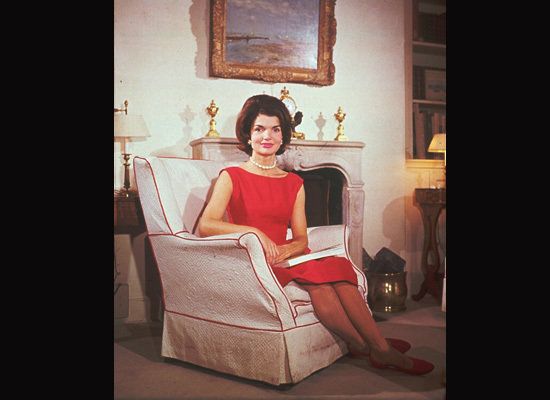
Thanks to the Green Movement, there are now eco-friendly fashion options on the market, from chic vegan shoe lines to silky and sustainable bamboo knits. But one of the easiest (and often economical) ways to go green is by simply buying vintage. "Green is the new black and vintage is the original green," says Decades owner Cameron Silver. "Hollywood helped propel vintage as a viable fashion option, and helped to demystify 'used clothing' and remove any stigma associated with it."
Early fans such as Winona Ryder and Demi Moore, who debuted vintage on the red carpet, may not have chosen vintage for its green attributes, but they certainly helped to break the door wide open in fashion. "Every time I buy something vintage I feel like I'm recycling," reports Taylor De Cordoba gallery co-owner Heather Taylor, who counts an Yves Saint Laurent shirtdress and Zandra Rhodes chiffon headband in her collection. "Opting to buy a pre-existing garment directly lowers my carbon footprint."
Buying vintage to mix with modern pieces can be the most creative choice around when it comes to fashion. And you'll never have to worry about going to a party and seeing a woman wearing the same dress as you ever again. Just look at style icons like Dita Von Teese, Kate Moss and Chloe Sevigny, who have all used vintage to sartorially separate themselves from the masses.
"We all know that stuff comes back in style eventually so why spend good money on cheap knock offs that were probably made thousands of miles away," asks Delilah Snell, proprietor of the eco shop The Road Less Traveled. "Now it's not 'food miles,' but 'fashion miles.'" Consider for a moment the energy required to grow cotton, use pesticides, harvest, transport to the mills, ship to the designer, do the cutting and sewing and then ship to a store. It's exhausting just thinking about it.
Buying vintage is practically guilt-free shopping. What more could you ask for in this economy?
The Way We Wore owner and vintage encyclopedia Doris Raymond adds, "Recycling anything is about as green as you can get and the hippie movement started the popularity of wearing vintage clothing in the mid-1960s." Her Los Angeles shop stocks casual to high-end vintage clothing, accessories and jewelry. And gents-in-the-making can channel their inner Donald Draper at nearby Jake Vintage, where owner Jonathan Kanarek has assembled a collection of suits, trousers and sport coats from the 1940s through the early 1960s.
For those who don't wear recycled clothing or haven't set foot in a vintage shop in their lives, it can be intimidating. Here are some tips for incorporating vintage into your life, whether it's to help save the planet or to simply look a little edgier:
Start Small: Vintage neophytes should start with accessories such as purses and costume jewelry. "It's always best to wear one statement piece that fits well and really fits your personality as well," notes Raymond. "Avoid wearing vintage head-to-toe because that is very difficult to carry off."
Look in Your Parents or Grandparents Closets: "I still have my dad's army jacket from the Korean War," says Snell, who pairs it with jeans or cute heels and a black dress. "Clothing from the past often lasts forever. Do you remember a garment from Forever 21 lasting more than a second wash?"
Don't Buy Just Anything: Vintage is a great way to be fashionable and environmentally conscious, but Raymond warns to focus on the classics and beware of trendy styles. Higher end vintage stores will have done the editing for you.